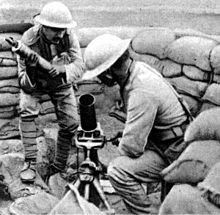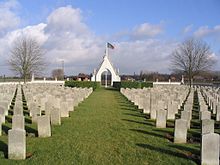The British Expeditionary Force (BEF) was the six divisions the British Army sent to the Western Front during the First World War. Planning for a British Expeditionary Force began with the 1906–1912 Haldane Reforms of the British Army carried out by the Secretary of State for War Richard Haldane following the Second Boer War (1899–1902).
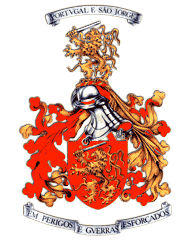
The Portuguese Army is the land component of the Armed Forces of Portugal and is also its largest branch. It is charged with the defence of Portugal, in co-operation with other branches of the Armed Forces. With its origins going back to the 12th century, it can be considered one of the oldest active armies in the world.

SM U-35 was a German U 31-class U-boat which operated in the Mediterranean Sea during World War I. It ended up being the most successful U-boat participating in the war, sinking 220 merchant ships for a total of 505,121 gross register tons (GRT).

SM U-14 or U-XIV was a U-boat or submarine of the Austro-Hungarian Navy during the First World War. She was launched in 1912 as the French Brumaire-class submarineCurie, but captured and rebuilt for service in the Austro-Hungarian Navy. At war's end, the submarine was returned to France and restored to her former name.

SM U-17 was a German submarine during World War I. U-17 sank the first British merchant vessel in the First World War, and also sank another ten ships, damaged one ship and captured two ships, surviving the war without casualty.

SM U-4 or U-IV was a U-3-class submarine or U-boat built for and operated by the Austro-Hungarian Navy before and during the First World War. The submarine was built as part of a plan to evaluate foreign submarine designs, and was the second of two boats of the class built by Germaniawerft of Kiel, Germany.
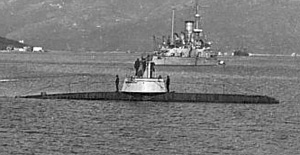
SM U-11 or U-XI was a U-10-class submarine in the Austro-Hungarian Navy during World War I. She was originally a German Type UB I submarine commissioned into the German Imperial Navy as SM UB-15.
SM U-66 was the lead ship of the Type U-66 submarines or U-boats for the Imperial German Navy during World War I. The submarine had been laid down in Kiel in November 1913 as U-7, the lead ship of the U-7 class for the Austro-Hungarian Navy. They became convinced after the outbreak of war in August 1914 that none of these submarines could be delivered to the Adriatic via Gibraltar, and sold the entire class, including U-7, to the German Imperial Navy in November 1914.

The Portuguese Expeditionary Corps was the main military force from Portugal that fought in the Western Front, during World War I. Portuguese neutrality ended in 1916 after the Portuguese seizure of German merchant ships resulted in the German Empire declaring war on Portugal. The expeditionary force was raised soon after and included around 55,000 soldiers.

SM U-27 or U-XXVII was the lead boat of the U-27 class of U-boats or submarines for the Austro-Hungarian Navy. U-27 was built by the Austrian firm of Cantiere Navale Triestino (CNT) at the Pola Navy Yard and launched on 19 October 1916. She was commissioned on 24 February 1917.
SM U-28 or U-XXVIII was a U-27-class U-boat or submarine for the Austro-Hungarian Navy. U-28, built by the Austrian firm of Cantiere Navale Triestino (CNT) at the Pola Navy Yard, was launched in January 1917 and commissioned in June.
SM UB-47 was a Type UB II submarine or U-boat for the German Imperial Navy during World War I. UB-47 was sold to the Austro-Hungarian Navy during the war. In Austro-Hungarian service the B was dropped from her name and she was known as SM U-47 or U-XLVII as a member of the Austro-Hungarian U-43 class.
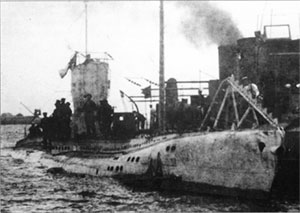
SM UB-43 was a Type UB II submarine or U-boat for the German Imperial Navy during World War I. UB-43 was sold to the Austro-Hungarian Navy during the war. In Austro-Hungarian service the B was dropped from her name and she was known as SM U-43 or U-XLIII as the lead boat of the Austro-Hungarian U-43 class.

SM UB-42 was a Type UB II submarine or U-boat for the German Imperial Navy during World War I. UB-42 operated in the Mediterranean and the Black Seas during the war. She was broken up at Malta in 1920.

SM UB-10 was a German Type UB I submarine or U-boat in the German Imperial Navy during World War I.
SM UB-12 was a German Type UB I submarine or U-boat in the German Imperial Navy during World War I. The submarine disappeared in August 1918.

SM UB-16 was a German Type UB I submarine or U-boat in the German Imperial Navy during World War I. The submarine was sunk by a British submarine in May 1918.
SM UB-17 was a German Type UB I submarine or U-boat in the German Imperial Navy during World War I. The submarine disappeared during a patrol in March 1918.

SM UB-6 was a German Type UB I submarine or U-boat in the German Imperial Navy during World War I. The submarine was interned after running aground in neutral Dutch waters, and was scuttled by her crew at Hellevoetsluis.

SM UB-50 was a German Type UB III submarine or U-boat in the German Imperial Navy during World War I. The U-boat was ordered on 20 May 1916. She was commissioned into the Pola Flotilla of the German Imperial Navy on 12 July 1917 as SM UB-50.





